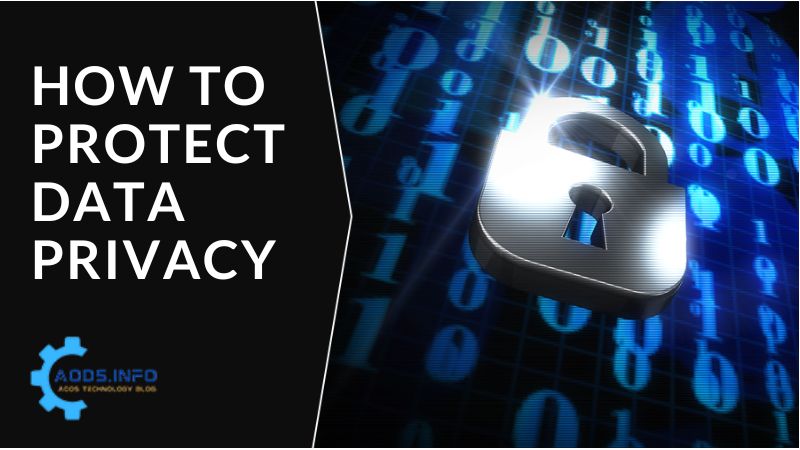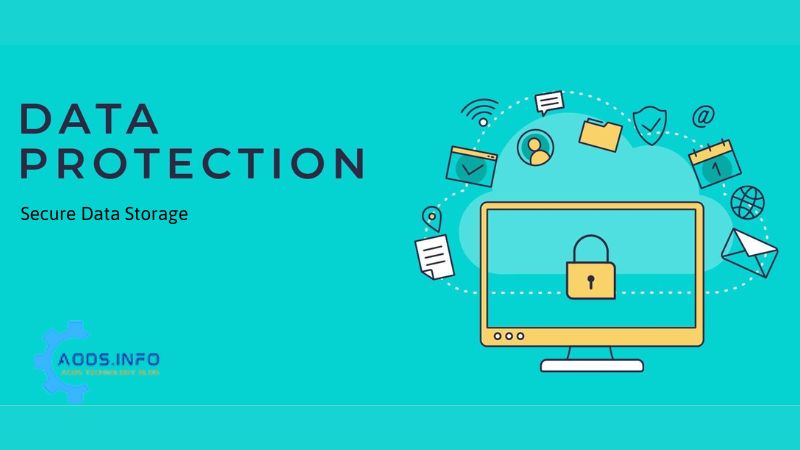In an era where data has become a valuable commodity, the need to protect data privacy has never been more critical. As businesses and individuals increasingly rely on digital platforms to store and process sensitive information, the risk of unauthorized access, use, or disclosure looms large. In this comprehensive guide, Aods.info will explore key strategies on how to protect data privacy effectively.
Contents
- 1 How to Protect Data Privacy
- 1.1 Encryption: The Guardian Shield
- 1.2 Access Controls: Locking the Gates
- 1.3 Data Minimization: Less is More
- 1.4 Regular Audits and Monitoring: Vigilance in Action
- 1.5 Employee Training: The Human Firewall
- 1.6 Secure Data Storage: Building Fortresses
- 1.7 Data Anonymization and Pseudonymization: A Privacy Mask
- 1.8 Legal Compliance: Navigating the Regulatory Landscape
- 1.9 Vendor Management: Allies in Data Protection
- 1.10 Incident Response Plan: A Blueprint for Crisis
- 2 Conclusion: Empowering Data Guardians
How to Protect Data Privacy
Encryption: The Guardian Shield
The first line of defense in the battle for data privacy is encryption. By encoding sensitive information with complex algorithms, encryption ensures that even if unauthorized entities gain access to the data, it remains indecipherable without the corresponding encryption key. This method, known as end-to-end encryption, is crucial for protecting data both in transit and at rest. Implementing robust encryption protocols adds an extra layer of security, fortifying the guardian shield around your most valuable information.
Access Controls: Locking the Gates
Controlling access to sensitive data is paramount. How to protect data privacy starts with managing who has permission to view, edit, or manage critical information. Implementing strong access controls involves using a combination of secure passwords, multi-factor authentication, and role-based access permissions. This ensures that only authorized personnel can access specific data, limiting the potential for internal breaches or unauthorized external access.
Data Minimization: Less is More
Collecting and retaining only the data necessary for business operations is a fundamental principle of data privacy. Data minimization reduces the risk in case of a breach by limiting the amount of sensitive information stored. The less data you have, the less there is to lose or compromise. By adhering to the principle of “less is more,” organizations can significantly mitigate the impact of potential data breaches.
Regular Audits and Monitoring: Vigilance in Action
Vigilance is key to protecting data privacy. Regularly auditing systems and monitoring data access logs allow organizations to identify any unusual or unauthorized activities promptly. By implementing monitoring tools that provide real-time alerts, businesses can take immediate action to address potential security threats, demonstrating a commitment to proactive data protection.
Employee Training: The Human Firewall
In the quest to protect data privacy, employees are the first line of defense and, at times, the weakest link. Training staff on data privacy best practices is essential. Employees need to understand how to handle sensitive information, recognize phishing attempts, and follow established security protocols. An informed and vigilant workforce acts as a human firewall, significantly reducing the risk of unintentional data breaches caused by human error.
Secure Data Storage: Building Fortresses
Securing data storage infrastructure is crucial to data privacy. Utilizing industry-standard practices such as secure servers, firewalls, and intrusion detection systems helps fortify the digital fortress that houses sensitive information. By adopting a defense-in-depth approach, organizations can create multiple layers of security, making it more challenging for unauthorized entities to breach their data storage systems.
Data Anonymization and Pseudonymization: A Privacy Mask
Anonymizing or pseudonymizing data adds an additional layer of protection. These techniques involve removing or replacing personally identifiable information, reducing the risk of identifying individuals in case of a breach. By incorporating privacy masks, organizations can strike a balance between data utility and privacy, ensuring that the information remains valuable for analytics and operations without compromising individual identities.
Legal Compliance: Navigating the Regulatory Landscape
Navigating the complex landscape of data protection regulations is a fundamental aspect of protecting data privacy. Adhering to laws such as the General Data Protection Regulation (GDPR), California Consumer Privacy Act (CCPA), or any other relevant legislation in your jurisdiction is crucial. Compliance not only helps avoid legal consequences but also establishes a foundation for ethical and responsible data handling.
Vendor Management: Allies in Data Protection
Many organizations rely on third-party vendors or service providers for various functions. Ensuring that these entities uphold robust data protection measures is essential. Performing due diligence on their security practices and requiring adherence to your data privacy standards can help mitigate the risks associated with outsourcing. Strong partnerships with vendors who prioritize data privacy become allies in the broader mission to protect sensitive information.
Incident Response Plan: A Blueprint for Crisis
No organization is immune to the possibility of a data breach. Having a well-defined incident response plan is critical for effective crisis management. This plan should outline the steps for containing a breach, notifying affected parties, and cooperating with regulatory authorities. A swift and coordinated response can minimize the impact of a breach, demonstrating accountability and commitment to protecting data privacy.
Conclusion: Empowering Data Guardians
In conclusion, safeguarding sensitive information is a multifaceted endeavor that demands a comprehensive and proactive approach. Understanding how to protect data privacy involves implementing a combination of encryption, access controls, data minimization, regular audits, and employee training. Secure data storage, anonymization, and pseudonymization, legal compliance, vendor management, and an incident response plan collectively empower organizations to act as data guardians, ensuring the confidentiality, integrity, and availability of sensitive information.
By embracing these eleven strategies, businesses and individuals can fortify their defenses against the ever-evolving threats to data privacy. In an interconnected world where information is a prized asset, prioritizing data privacy is not just a responsibility but a commitment to building trust and maintaining the integrity of digital ecosystems.




